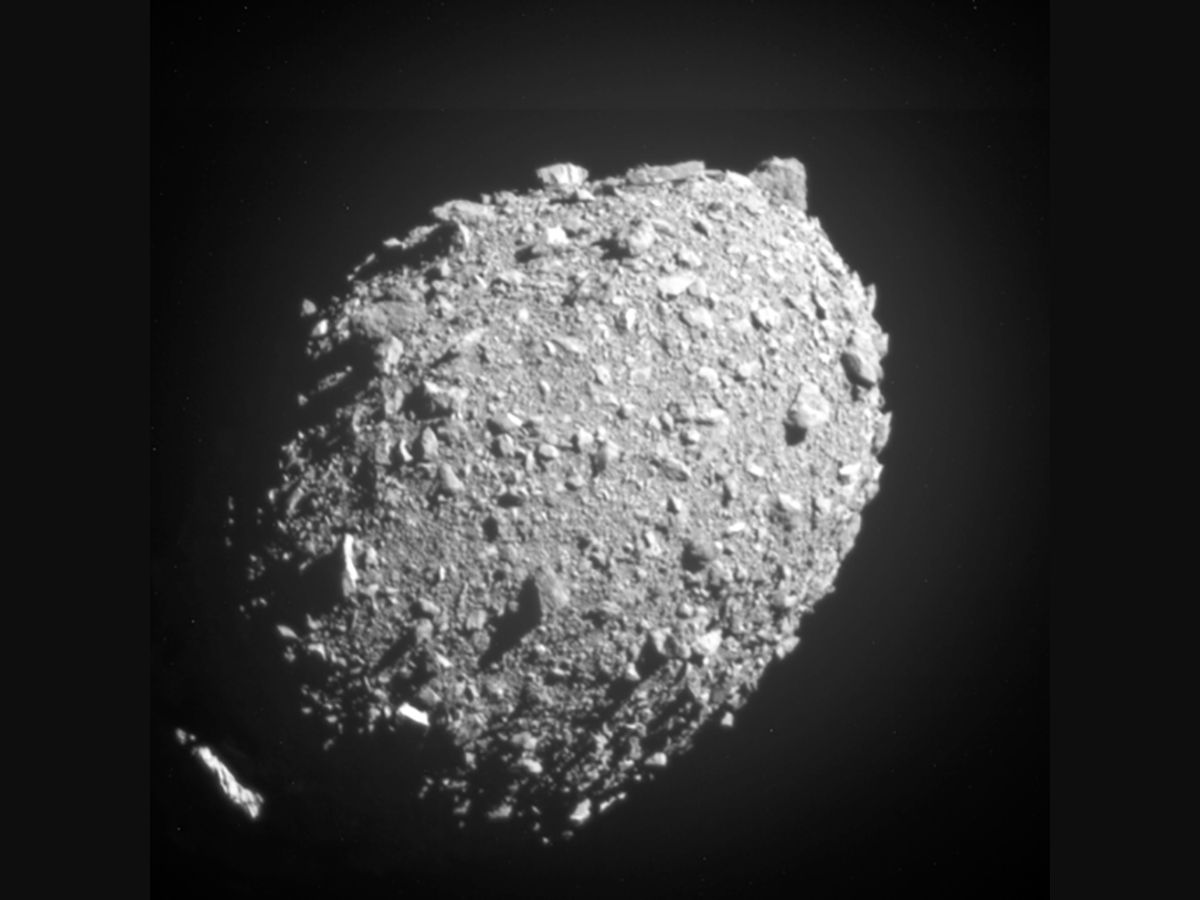[ad_1]
New Delhi: The Italian Space Agency (ASI) has released the first images of asteroid Dimorphos after NASA’s Double Asteroid Redirection Test (DART) spacecraft crashed into it on Tuesday, September 27. The spacecraft made history by colliding with an asteroid, marking the successful completion of the world’s first planetary defense test. A ‘selfie-sat’, known as the Light Italian Cubesat for Imaging of Asteroids (LICIACUBE), which was a part of the DART mission, observed the collision, witnessed DART’s impact on Dimorphos, and captured images of the asteroid moments after DART crashed into it.
ASI’s LICIACube will study the formation of the plume generated by the impact, and characterize its structure and evolution.
Here are the first images taken by #LICIACube of #DARTmission impact on asteroid #dimorphos,
Now weeks and months of hard work are now starting for scientists and technicians involved in this mission, so stay tuned because we will have a lot to tell! pic.twitter.com/kVz1WmcsL7— LICIACube (@LICIACube) September 27, 2022




DART’s DRACO (Didymos Reconnaissance and Asteroid Camera for optical navigation) instrument captured images of Dimorphos as the spacecraft approached the asteroid. Moments before the crash, DRACO imaged the rocky terrain of Dimorphos, which is a football-sized asteroid.

Dimorphos, which is a part of a binary, near-Earth asteroid system called Didymos, posed no threat to Earth. DART demonstrated a first-of-its-kind planetary defense technique by deflecting Dimorphos. This is the world’s first mission to test technology for defending Earth against potential asteroid or comet hazards.

Why Was Dimorphos Chosen As DART’s Target?
Before DART’s impact with Dimorphos, the asteroid orbited Didymos, the other asteroid in the binary system. Didymos has a diameter of around 780 meters, and is located at a distance of 487,446,221 kilometers from Earth. Smaller in size, Dimorphos had a diameter of around 160 meters. This binary asteroid system Didymos was DART’s target.
Though Dimorphos posed no threat to Earth, DART was made to collide with it to change the asteroid’s speed and path, as a test of NASA’s ability to achieve a kinetic impact on an asteroid and observe its response.
NASA selected Dimorphos because it did not pose any threat to Earth, and hence, served as the perfect testing ground to see if the intentional crash of a spacecraft into an asteroid is effective in changing its speed and direction.
What Is Next For The DART Mission?
The results of DART’s kinetic impact with Dimorphos will be analyzed by the DART Investigation Team. The team will use telescopes on Earth to study how much the spacecraft’s impact changed the asteroid’s motion in space.
DART was launched on November 24, at 1:20 am EST (November 24, at 10:50 am IST) aboard a SpaceX Falcon 9 rocket from Vandenberg Space Force Base.
Since the DART mission is successful, it is expected to provide important data to help Earth better prepare for an asteroid that might pose a threat to the planet in the future.
[ad_2]
Source link